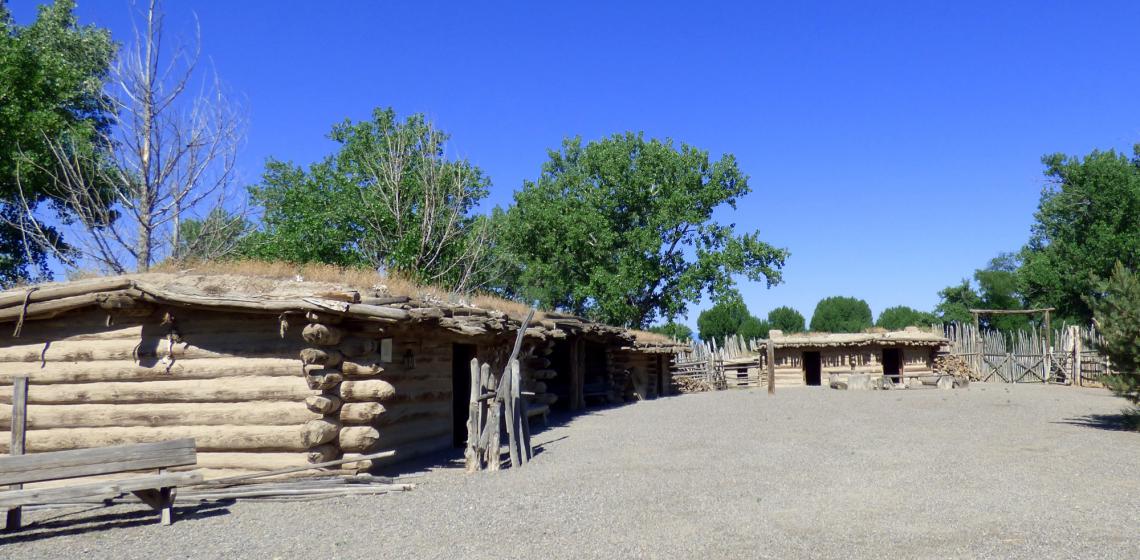
Fort Uncompahgre was located near the confluence of the Gunnison and Uncompahgre Rivers and was probably built around 1828 by Antoine Robidoux. The modern-day town of Delta is located close to the site. The fort was abandoned in 1844. Little is known about the construction or layout of the fort. The reconstructed fort opened in 1990, following an initiative by William Bailey and his supporters. Currently, the fortress is under management by the Interpretive Association of Western Colorado (IAWC).
This area was a hub for trails coming north out of the San Juan River Basin in south western Colorado and north western New Mexico, meeting the North Branch of the Old Spanish Trail (a pack route traveling east and west from Santa Fe to Los Angeles). Step back in time and visit the replica of an 1820’s era historic fur trading center and learn about the history of the earliest days of commerce on Colorado’s Western Slope.
The Trapper’s Cabin is an example of a simple living structure that provided shelter during the coldest months.
The beehive shaped adobe oven is called an Horno in Spanish. A fire is built inside and allowed to burn for three or four hours. Afterwards the remaining coals and ashes are cleaned out. At any one time Fort Uncompahgre would have had from fifteen to twenty-five individuals living and working out of the post. All employees were Mexican from the Santa Fe and Taos areas. The kitchen or cocina, as it was known in Spanish, also served as living quarters.
Fort Uncompahgre would most likely have had an open trade room such as the one reconstructed nowadays, with trade goods in open view. Most trade goods were collected in St. Louis or later, St. Joseph, Missouri, where they were loaded into wagons for the journey to Santa Fe over the Santa Fe Trail. To protect the trade goods from the elements and 700 miles in a wagon without springs, they were packed in boxes or barrels. Delicate items were surrounded with cornmeal that could also be sold at the end of the trail. Surviving trade manifests indicate that, by volume, rearly eighty percent of the trade went to the women.
To the west of the Trade Room is the underground bunker where the powder was stored. In the event of an explosion, the force of the blast would be directed upwards and away from the surrounding structures.
The Smith at Fort Uncompahgre would have made his own forge from sun-baked adobe block cemented together with mud.
A custom was established for each trading fort to keep one room open for visitors. Although it was usually called the “Trapper’s Quarters,” it was open to anyone who visited. Travelers carried their own bedrolls so they only needed a place to lay them out of the weather.
Text source: fortuncompahgre.org
